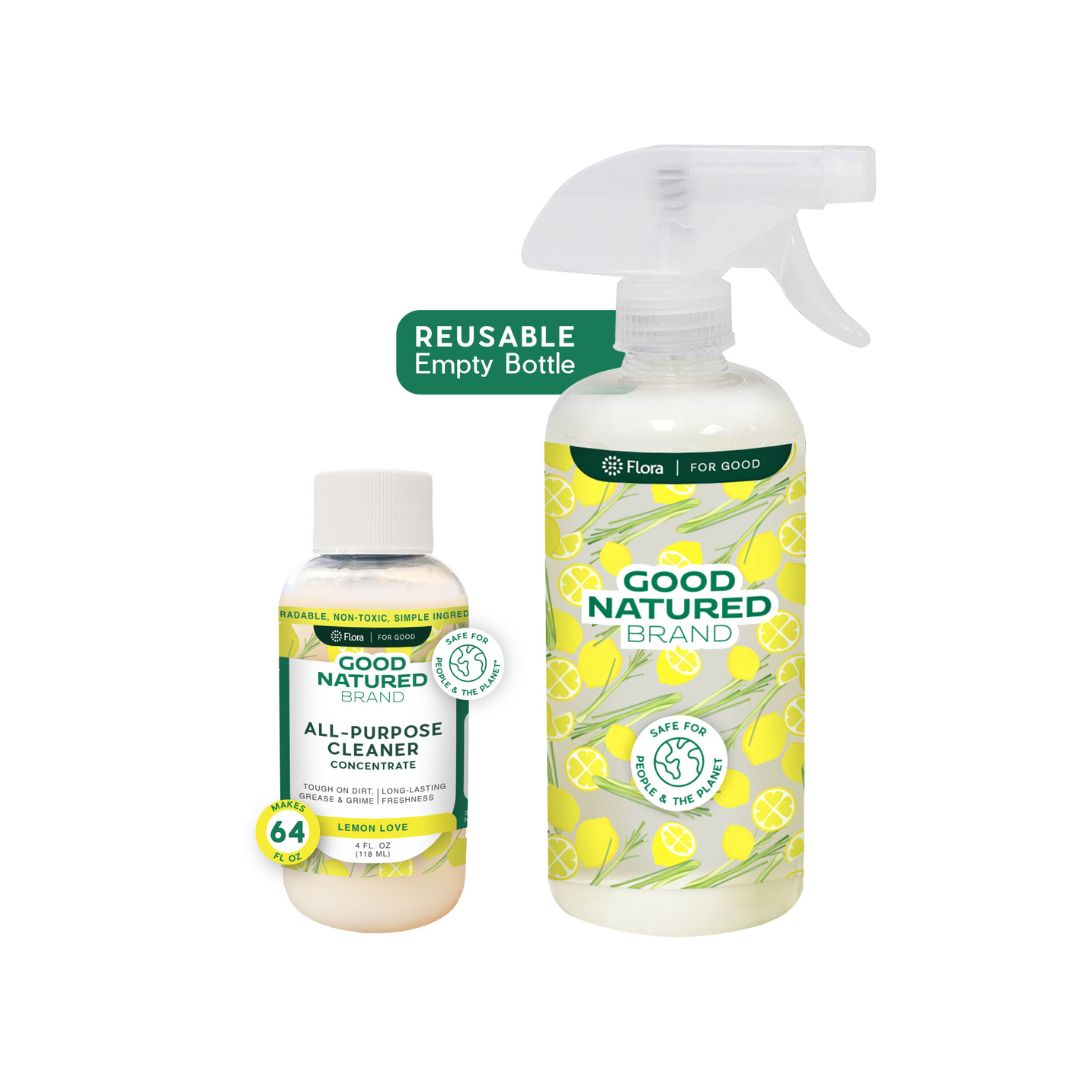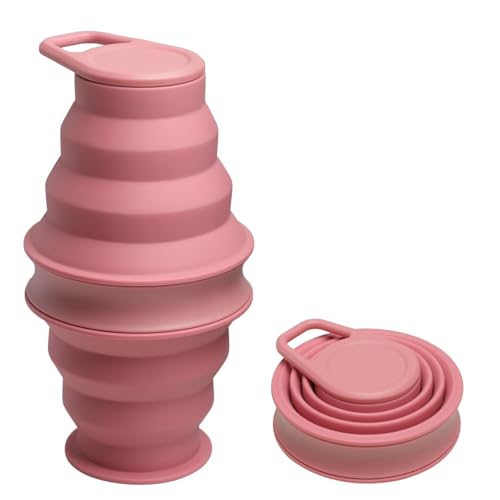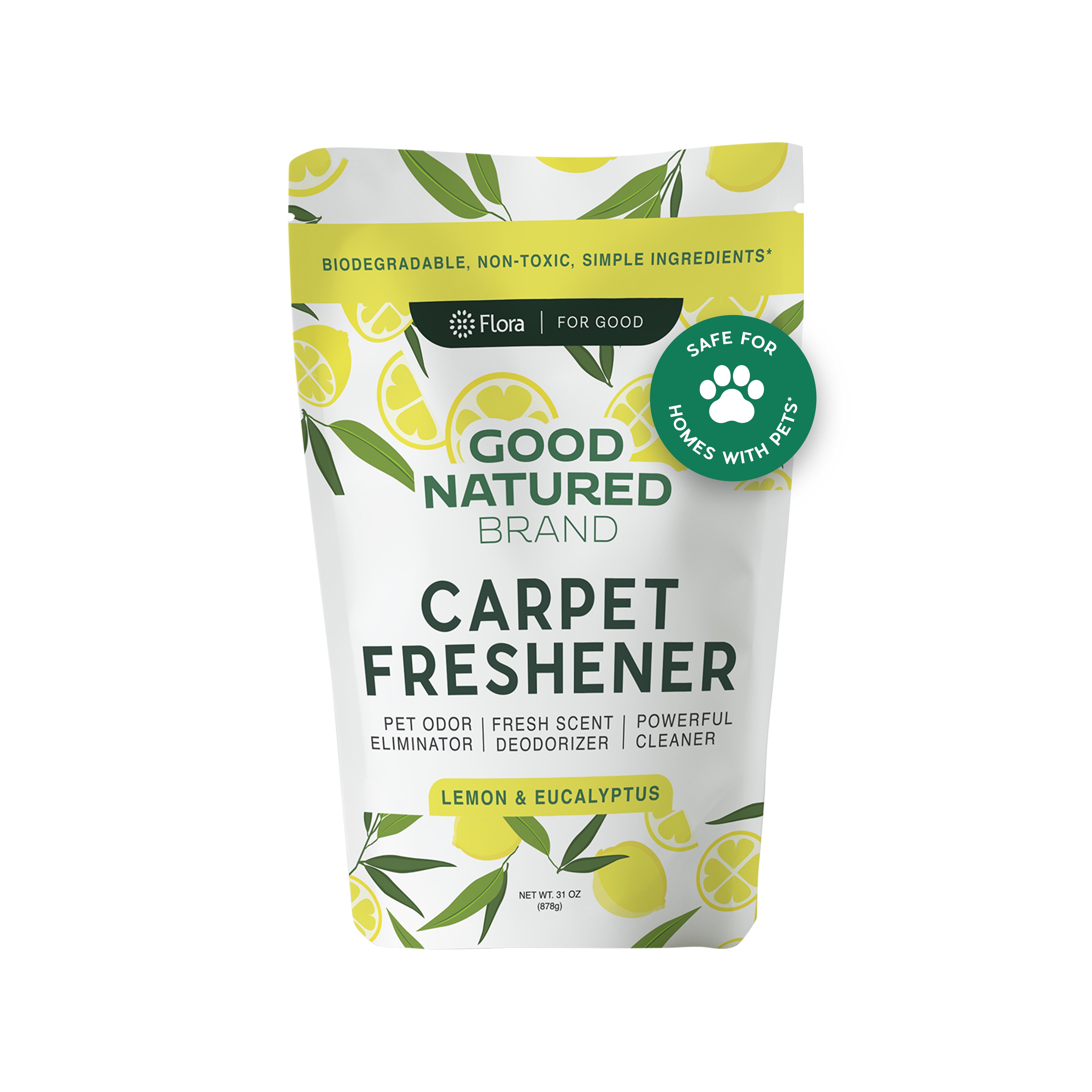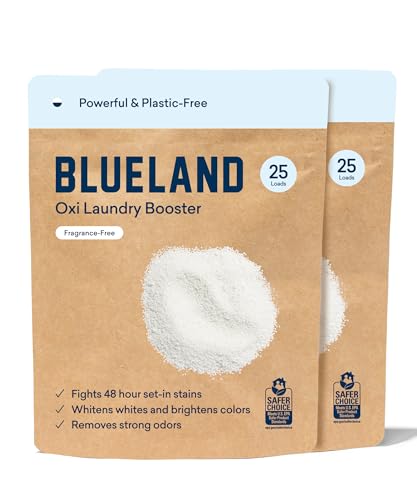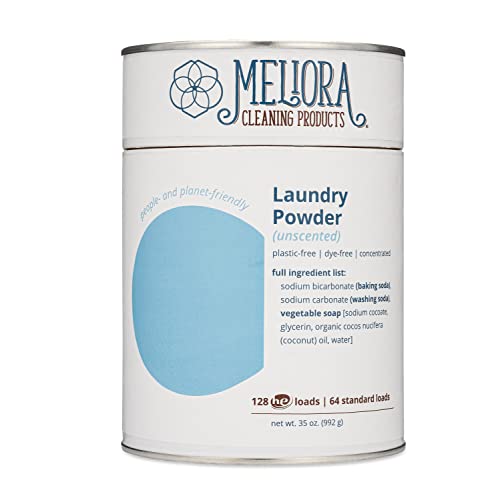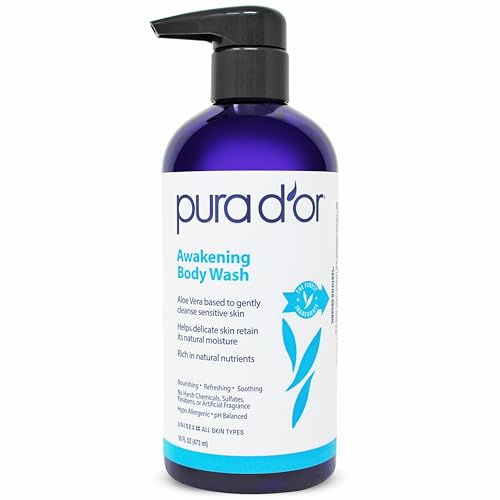
PURA D'OR Awakening Body Wash - Moisturizing, Hypoallergenic, Vegan with Aloe & Lavender - 16oz


Pelagonium Graveolens Oil
High RiskPelargonium graveolens oil is an essential oil extracted from the leaves and stems of the rose geranium plant. It is commonly used in cosmetics and personal care products for its fragrance and potential skin benefits.
Sustai Insights
Pelargonium graveolens oil offers functional benefits as a fragrance component and may possess skin-soothing properties. However, it has a high allergenic potential, posing risks of skin irritation and sensitization. Environmental concerns include its potential as a pollutant, though it is not classified as bioaccumulative. Regulatory bodies have placed some restrictions on its use, and the overall risk level is assessed as high. Users should exercise caution, particularly those with sensitivities, and explore safer alternatives such as synthetic fragrances or other essential oils.
Citric Acid
Medium RiskCitric acid is an alpha hydroxy acid used in personal care products primarily for its role as a pH adjuster and natural preservative. It occurs naturally in citrus fruits and is commonly utilized in various formulations for its chelating properties and mild exfoliation benefits.
Sustai Insights
Citric acid offers functional benefits as an effective preservative and pH stabilizer, contributing to product longevity and stability. It is biodegradable and derived from renewable sources. Health risks are low, with minimal concerns regarding carcinogenicity, allergies, and reproductive toxicity. However, moderate use restrictions exist due to potential irritation at high concentrations. Environmental risks are limited, as citric acid is not known to accumulate in ecosystems. Regulatory agencies have no significant advisories against its use. Overall, it is assessed as a medium-risk ingredient, with safe usage practices recommended and alternatives available.
Sodium Methyl Cocoyl Taurate
Low RiskSodium methyl cocoyl taurate is a sodium salt derived from coconut fatty acids, primarily used as a mild surfactant and foaming agent in personal care products. It helps to cleanse and stabilize formulations, contributing to improved texture and performance.
Sustai Insights
Sodium methyl cocoyl taurate is recognized for its effective surfactant properties, providing gentle cleansing and foam production in formulations. It is considered low risk for health concerns such as carcinogenicity and allergenic potential, with minimal irritation noted. Environmentally, it poses low hazards with no significant bioaccumulation or pollution risks. Regulatory bodies, including ECHA, indicate no current restrictions. Overall, it presents a low risk profile, making it a viable choice in personal care applications. Safe usage practices are recommended, and alternatives may include other mild surfactants.
Sea Salt
Low RiskSea salt is a mixture of inorganic salts derived primarily from the evaporation of seawater. It consists mainly of sodium chloride, with minor amounts of other minerals. Sea salt is commonly used as a seasoning and preservative in food products and may also have applications in cosmetics and personal care items.
Sustai Insights
Sea salt serves as an effective flavor enhancer and preservative, contributing to the taste and shelf-life of food products. It is generally considered safe with low risk for health concerns such as cancer, allergies, and reproductive toxicity. Environmental impact is minimal, as it does not contribute significantly to pollution or bioaccumulation. Regulatory bodies, including the FDA, currently do not impose restrictions on its use. Overall, the risk level associated with sea salt is low, making it a widely accepted ingredient with no significant adverse effects reported.
Caprylyl Glycol
Low RiskCaprylyl glycol (1,2-octanediol) is a multifunctional cosmetic ingredient primarily used as a skin-conditioning agent and preservative. It is derived from caprylic acid, a fatty acid found in coconut oil, and is commonly included in personal care products for its moisturizing properties.
Sustai Insights
Caprylyl glycol offers functional benefits such as acting as an effective humectant and preservative, enhancing skin hydration and product stability. It is considered to have low health risks, with no significant concerns regarding carcinogenicity, allergies, or reproductive toxicity. Environmentally, it poses minimal risks, being non-bioaccumulative and not linked to pollution. Regulatory assessments affirm its safety, with no major advisories against its use. Overall, the ingredient is assessed to have a low risk, making it a suitable choice in cosmetic formulations.
Lavandula Hybrida Oil
Low RiskLavandula hybrida oil is an essential oil obtained from the hybrid lavender plant, known for its aromatic properties and use in various cosmetic and therapeutic applications. It is commonly used for its fragrance and potential calming effects in personal care products.
Sustai Insights
Lavandula hybrida oil offers functional benefits as a fragrance and may have mild calming effects. It is sustainably sourced and typically presents low risks for carcinogenicity, allergies, and reproductive toxicity. However, it carries low to moderate concerns about endocrine disruption. Environmental impacts are minimal, and it is not currently subject to significant regulatory restrictions. Overall, the risk level associated with this ingredient is low, making it a relatively safe option in product formulations.
Vegetarian Glycerin
Low RiskVegetarian glycerin, also known as glycerol, is a colorless, odorless, and viscous liquid derived from plant sources. It is primarily used as a humectant, solvent, and emollient in various personal care products, helping to retain moisture and improve texture.
Sustai Insights
Vegetarian glycerin offers functional benefits as an effective humectant, promoting hydration and skin smoothness. It is biodegradable and typically sustainably sourced. Health risks associated with glycerin are low, with no significant concerns for carcinogenicity, allergens, or reproductive toxicity. Environmental risks are minimal, and it is not subject to major regulatory warnings. Overall, the risk level for this ingredient is low, making it a safe choice in formulations. Safe usage practices include ensuring proper concentrations in products, and alternatives such as propylene glycol exist but may have differing properties.
Copaiba Oil
Low RiskCopaiba oil is an essential oil derived from the balsam of copaiba trees, primarily found in South America. It is commonly used in various products for its potential therapeutic properties, including anti-inflammatory and analgesic effects.
Sustai Insights
Copaiba oil offers functional benefits such as anti-inflammatory properties and is sustainably sourced from copaiba trees, contributing to its eco-friendliness. Health risks are minimal, with low concerns for carcinogenicity, allergies, and reproductive toxicity. Environmental risks are also low, with no significant pollutant or bioaccumulation concerns. Regulatory bodies, including the FDA, do not impose restrictions on its use. Overall, copaiba oil is assessed as having a low risk profile, making it a viable option in formulations.
Caprylyl/ Capryl Glycoside
Low RiskCaprylyl/Capryl Glycoside is a surfactant derived from natural sources, primarily used in personal care and cosmetic products for its emulsifying properties. It helps to stabilize formulations and enhance cleaning efficacy while being gentle on the skin.
Sustai Insights
Caprylyl/Capryl Glycoside offers functional benefits as a mild surfactant and emulsifier, contributing to product stability without significant irritation. It is biodegradable and considered sustainably sourced. Health risks are low, with minimal concerns regarding carcinogenicity and developmental toxicity. Environmental impact is also low, as it does not accumulate in ecosystems. Regulatory assessments indicate no current restrictions. Overall, it presents a low risk profile, making it a suitable choice in formulations.
Cocamidopropyl Hydroxysultaine
Low RiskCocamidopropyl hydroxysultaine is a synthetic skin and hair conditioning agent commonly used in personal care products. It functions primarily as a surfactant, providing foaming and emulsifying properties, while also contributing to the conditioning of hair and skin.
Sustai Insights
Cocamidopropyl hydroxysultaine offers functional benefits as a mild surfactant and conditioning agent, with low concerns regarding carcinogenicity, allergies, and reproductive toxicity. It is generally regarded as safe with low irritation potential. Environmental assessments indicate low pollutant potential and minimal bioaccumulation. Regulatory bodies have not imposed significant restrictions on its use, aligning with low risk levels overall. Safe usage is advised, particularly for sensitive populations, and alternative gentle surfactants may be considered for those seeking greener options. In conclusion, this ingredient is classified as low risk.
Melaleuca Alternifolia (Tea Tree)
Low RiskMelaleuca alternifolia, commonly known as tea tree, is an unspecified preparation derived from the leaves of the tea tree. It is primarily used for its antiseptic properties and is found in various personal care products.
Sustai Insights
Tea tree oil offers functional benefits such as antimicrobial properties, making it effective in skincare formulations. It is considered to have low health risks, including low concerns for carcinogenicity, allergies, and reproductive toxicity. Environmental risks are minimal, with no significant pollutant or bioaccumulation potential. Regulatory bodies have noted no major advisories, and overall risk assessment remains low. For safe usage, it is recommended to use appropriate concentrations and consider alternatives like lavender or eucalyptus oil for similar benefits.
Aloe Barbadensis (Aloe Vera) Leaf Extract
Low RiskAloe vera leaf extract is produced from the succulent leaves of the Aloe barbadensis plant. It is commonly used in cosmetic formulations for its moisturizing and soothing properties, making it a popular ingredient in skincare and personal care products.
Sustai Insights
Aloe vera leaf extract offers several functional benefits, including hydration and skin soothing effects, which are well-supported by scientific literature. It is considered to have a low risk for common health concerns such as carcinogenicity, allergies, or reproductive toxicity. Environmentally, it poses minimal risks, with no significant pollutant potential or bioaccumulation reported. Regulatory bodies have not imposed major restrictions, although verified products should not contain certain contaminants. Overall, this ingredient is assessed as low risk, with safe usage practices and the availability of alternative soothing agents if desired.
Sodium Methyl Cocoyl Taurate
Low RiskSodium methyl cocoyl taurate is a sodium salt derived from coconut fatty acids, primarily used as a mild surfactant and foaming agent in personal care products. It helps to cleanse and stabilize formulations, contributing to improved texture and performance.
Sustai Insights
Sodium methyl cocoyl taurate is recognized for its effective surfactant properties, providing gentle cleansing and foam production in formulations. It is considered low risk for health concerns such as carcinogenicity and allergenic potential, with minimal irritation noted. Environmentally, it poses low hazards with no significant bioaccumulation or pollution risks. Regulatory bodies, including ECHA, indicate no current restrictions. Overall, it presents a low risk profile, making it a viable choice in personal care applications. Safe usage practices are recommended, and alternatives may include other mild surfactants.
Sea Salt
Low RiskSea salt is a mixture of inorganic salts derived primarily from the evaporation of seawater. It consists mainly of sodium chloride, with minor amounts of other minerals. Sea salt is commonly used as a seasoning and preservative in food products and may also have applications in cosmetics and personal care items.
Sustai Insights
Sea salt serves as an effective flavor enhancer and preservative, contributing to the taste and shelf-life of food products. It is generally considered safe with low risk for health concerns such as cancer, allergies, and reproductive toxicity. Environmental impact is minimal, as it does not contribute significantly to pollution or bioaccumulation. Regulatory bodies, including the FDA, currently do not impose restrictions on its use. Overall, the risk level associated with sea salt is low, making it a widely accepted ingredient with no significant adverse effects reported.
Caprylyl Glycol
Low RiskCaprylyl glycol (1,2-octanediol) is a multifunctional cosmetic ingredient primarily used as a skin-conditioning agent and preservative. It is derived from caprylic acid, a fatty acid found in coconut oil, and is commonly included in personal care products for its moisturizing properties.
Sustai Insights
Caprylyl glycol offers functional benefits such as acting as an effective humectant and preservative, enhancing skin hydration and product stability. It is considered to have low health risks, with no significant concerns regarding carcinogenicity, allergies, or reproductive toxicity. Environmentally, it poses minimal risks, being non-bioaccumulative and not linked to pollution. Regulatory assessments affirm its safety, with no major advisories against its use. Overall, the ingredient is assessed to have a low risk, making it a suitable choice in cosmetic formulations.
Lavandula Hybrida Oil
Low RiskLavandula hybrida oil is an essential oil obtained from the hybrid lavender plant, known for its aromatic properties and use in various cosmetic and therapeutic applications. It is commonly used for its fragrance and potential calming effects in personal care products.
Sustai Insights
Lavandula hybrida oil offers functional benefits as a fragrance and may have mild calming effects. It is sustainably sourced and typically presents low risks for carcinogenicity, allergies, and reproductive toxicity. However, it carries low to moderate concerns about endocrine disruption. Environmental impacts are minimal, and it is not currently subject to significant regulatory restrictions. Overall, the risk level associated with this ingredient is low, making it a relatively safe option in product formulations.
Citric Acid
Medium RiskCitric acid is an alpha hydroxy acid used in personal care products primarily for its role as a pH adjuster and natural preservative. It occurs naturally in citrus fruits and is commonly utilized in various formulations for its chelating properties and mild exfoliation benefits.
Sustai Insights
Citric acid offers functional benefits as an effective preservative and pH stabilizer, contributing to product longevity and stability. It is biodegradable and derived from renewable sources. Health risks are low, with minimal concerns regarding carcinogenicity, allergies, and reproductive toxicity. However, moderate use restrictions exist due to potential irritation at high concentrations. Environmental risks are limited, as citric acid is not known to accumulate in ecosystems. Regulatory agencies have no significant advisories against its use. Overall, it is assessed as a medium-risk ingredient, with safe usage practices recommended and alternatives available.
Vegetarian Glycerin
Low RiskVegetarian glycerin, also known as glycerol, is a colorless, odorless, and viscous liquid derived from plant sources. It is primarily used as a humectant, solvent, and emollient in various personal care products, helping to retain moisture and improve texture.
Sustai Insights
Vegetarian glycerin offers functional benefits as an effective humectant, promoting hydration and skin smoothness. It is biodegradable and typically sustainably sourced. Health risks associated with glycerin are low, with no significant concerns for carcinogenicity, allergens, or reproductive toxicity. Environmental risks are minimal, and it is not subject to major regulatory warnings. Overall, the risk level for this ingredient is low, making it a safe choice in formulations. Safe usage practices include ensuring proper concentrations in products, and alternatives such as propylene glycol exist but may have differing properties.
Copaiba Oil
Low RiskCopaiba oil is an essential oil derived from the balsam of copaiba trees, primarily found in South America. It is commonly used in various products for its potential therapeutic properties, including anti-inflammatory and analgesic effects.
Sustai Insights
Copaiba oil offers functional benefits such as anti-inflammatory properties and is sustainably sourced from copaiba trees, contributing to its eco-friendliness. Health risks are minimal, with low concerns for carcinogenicity, allergies, and reproductive toxicity. Environmental risks are also low, with no significant pollutant or bioaccumulation concerns. Regulatory bodies, including the FDA, do not impose restrictions on its use. Overall, copaiba oil is assessed as having a low risk profile, making it a viable option in formulations.
Caprylyl/ Capryl Glycoside
Low RiskCaprylyl/Capryl Glycoside is a surfactant derived from natural sources, primarily used in personal care and cosmetic products for its emulsifying properties. It helps to stabilize formulations and enhance cleaning efficacy while being gentle on the skin.
Sustai Insights
Caprylyl/Capryl Glycoside offers functional benefits as a mild surfactant and emulsifier, contributing to product stability without significant irritation. It is biodegradable and considered sustainably sourced. Health risks are low, with minimal concerns regarding carcinogenicity and developmental toxicity. Environmental impact is also low, as it does not accumulate in ecosystems. Regulatory assessments indicate no current restrictions. Overall, it presents a low risk profile, making it a suitable choice in formulations.
Cocamidopropyl Hydroxysultaine
Low RiskCocamidopropyl hydroxysultaine is a synthetic skin and hair conditioning agent commonly used in personal care products. It functions primarily as a surfactant, providing foaming and emulsifying properties, while also contributing to the conditioning of hair and skin.
Sustai Insights
Cocamidopropyl hydroxysultaine offers functional benefits as a mild surfactant and conditioning agent, with low concerns regarding carcinogenicity, allergies, and reproductive toxicity. It is generally regarded as safe with low irritation potential. Environmental assessments indicate low pollutant potential and minimal bioaccumulation. Regulatory bodies have not imposed significant restrictions on its use, aligning with low risk levels overall. Safe usage is advised, particularly for sensitive populations, and alternative gentle surfactants may be considered for those seeking greener options. In conclusion, this ingredient is classified as low risk.
Pelagonium Graveolens Oil
High RiskPelargonium graveolens oil is an essential oil extracted from the leaves and stems of the rose geranium plant. It is commonly used in cosmetics and personal care products for its fragrance and potential skin benefits.
Sustai Insights
Pelargonium graveolens oil offers functional benefits as a fragrance component and may possess skin-soothing properties. However, it has a high allergenic potential, posing risks of skin irritation and sensitization. Environmental concerns include its potential as a pollutant, though it is not classified as bioaccumulative. Regulatory bodies have placed some restrictions on its use, and the overall risk level is assessed as high. Users should exercise caution, particularly those with sensitivities, and explore safer alternatives such as synthetic fragrances or other essential oils.
Melaleuca Alternifolia (Tea Tree)
Low RiskMelaleuca alternifolia, commonly known as tea tree, is an unspecified preparation derived from the leaves of the tea tree. It is primarily used for its antiseptic properties and is found in various personal care products.
Sustai Insights
Tea tree oil offers functional benefits such as antimicrobial properties, making it effective in skincare formulations. It is considered to have low health risks, including low concerns for carcinogenicity, allergies, and reproductive toxicity. Environmental risks are minimal, with no significant pollutant or bioaccumulation potential. Regulatory bodies have noted no major advisories, and overall risk assessment remains low. For safe usage, it is recommended to use appropriate concentrations and consider alternatives like lavender or eucalyptus oil for similar benefits.
Aloe Barbadensis (Aloe Vera) Leaf Extract
Low RiskAloe vera leaf extract is produced from the succulent leaves of the Aloe barbadensis plant. It is commonly used in cosmetic formulations for its moisturizing and soothing properties, making it a popular ingredient in skincare and personal care products.
Sustai Insights
Aloe vera leaf extract offers several functional benefits, including hydration and skin soothing effects, which are well-supported by scientific literature. It is considered to have a low risk for common health concerns such as carcinogenicity, allergies, or reproductive toxicity. Environmentally, it poses minimal risks, with no significant pollutant potential or bioaccumulation reported. Regulatory bodies have not imposed major restrictions, although verified products should not contain certain contaminants. Overall, this ingredient is assessed as low risk, with safe usage practices and the availability of alternative soothing agents if desired.
Discover the rejuvenating power of PURA D'OR Awakening Body Wash, formulated with organic ingredients like Aloe Vera, Lavender, and Tea Tree oil for a refreshing cleanse. This pH-balanced body wash is perfect for all skin types, promoting soft, moisturized skin while being cruelty-free and vegan.
- Gentle Cleanse: Enriched with organic oils that cleanse without harsh chemicals, ensuring your skin feels refreshed and nourished.
- Soothing Ingredients: Features calming Lavender and Chamomile to promote relaxation and refresh your mind and body.
- Environmentally Friendly: Crafted with cruelty-free, vegan ingredients, supporting sustainable practices and eco-conscious choices.
- Daily Use: Ideal for everyday use, this body wash fits seamlessly into any bathing routine, leaving skin soft and fragrant.
- User-Friendly: Easy to apply and rinse off, making it perfect for busy lifestyles while providing a sensory experience with every wash.
Subscribe & Save with Sustai
- Best Price Guarantee: Always enjoy the lowest prices on sustainable home essentials.
- No Surprises: We’ll notify you before shipping. No hidden fees, ever.
- You’re in Charge: Change, pause, or cancel your subscription anytime with ease.
- Eco-Friendly Deliveries: Our grouped shipments mean less packaging and lower emissions.
Join us on a sustainable journey. Special offers for a limited time! Prices and promotions may change.
Recommended Products
Discover the rejuvenating power of PURA D'OR Awakening Body Wash, formulated with organic ingredients like Aloe Vera, Lavender, and Tea Tree oil for a refreshing cleanse. This pH-balanced body wash is perfect for all skin types, promoting soft, moisturized skin while being cruelty-free and vegan.
- Gentle Cleanse: Enriched with organic oils that cleanse without harsh chemicals, ensuring your skin feels refreshed and nourished.
- Soothing Ingredients: Features calming Lavender and Chamomile to promote relaxation and refresh your mind and body.
- Environmentally Friendly: Crafted with cruelty-free, vegan ingredients, supporting sustainable practices and eco-conscious choices.
- Daily Use: Ideal for everyday use, this body wash fits seamlessly into any bathing routine, leaving skin soft and fragrant.
- User-Friendly: Easy to apply and rinse off, making it perfect for busy lifestyles while providing a sensory experience with every wash.

You can have at most 2 Sustainable Steals products in your cart
Customer Reviews
Customers’ View
Customers appreciate the effective cleansing and skin-softening properties of this body wash, highlighting its gentle formula suitable for sensitive skin. Many users noted that it leaves their skin feeling moisturized and refreshed, with one customer stating, 'It makes my skin soft. Doesn’t dry it out.' The quality of the organic ingredients has also received positive feedback, with customers expressing satisfaction with the product's natural and clean formulation. While some reviews mention mixed opinions about the scent, many find it refreshing and invigorating, enhancing their shower experience. Overall, this body wash aligns well with eco-conscious values, as it is cruelty-free, vegan, and free from harsh chemicals, making it a trustworthy option for health-conscious consumers.
AI-generated from the text of customer reviewsThis product has no reviews yet.
